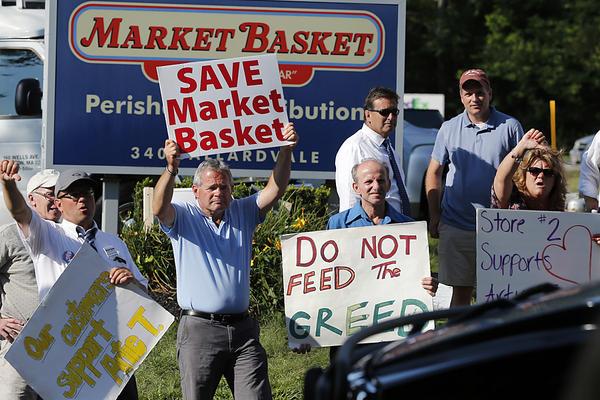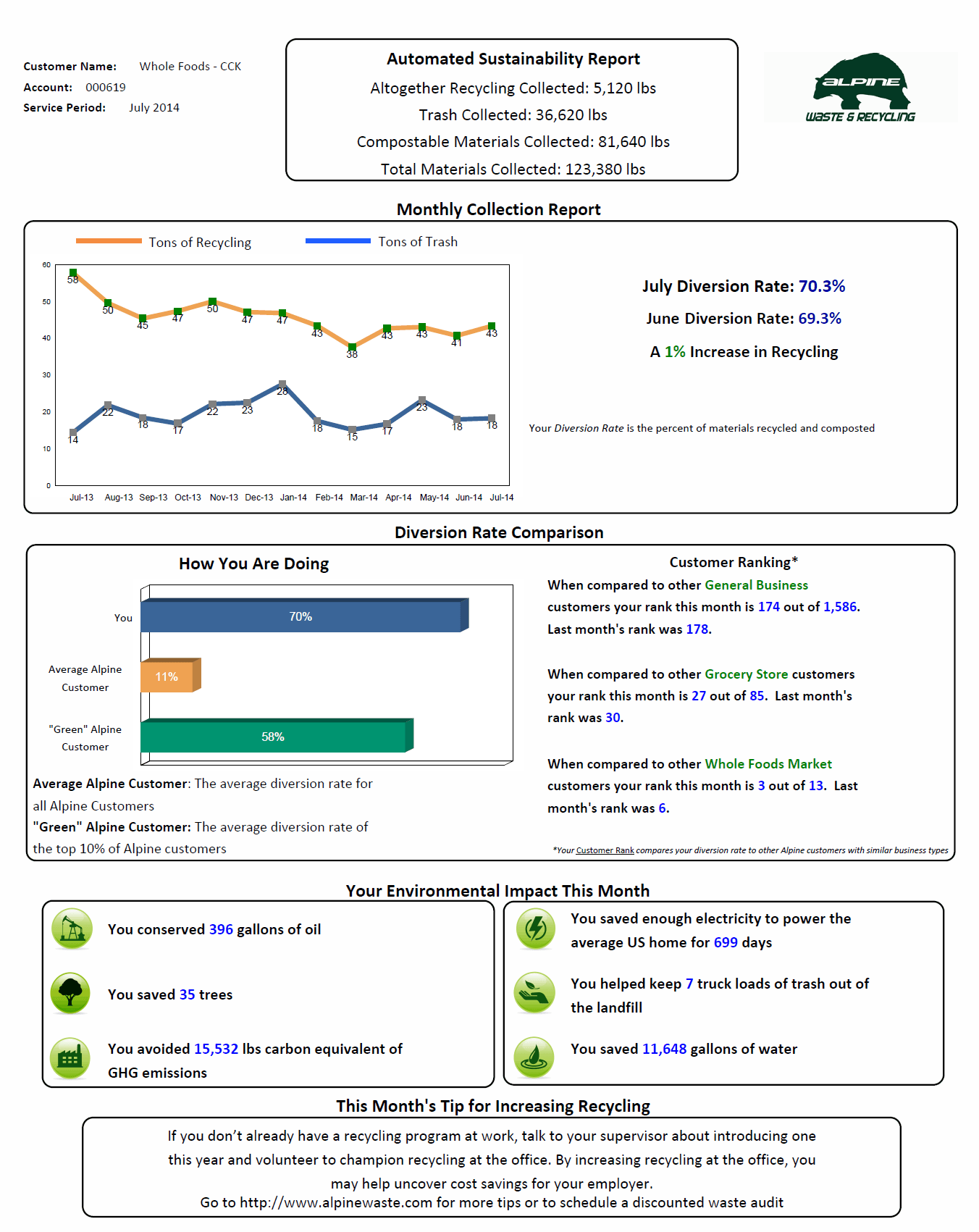O3b Aims to Offer Real Broadband to the World's 'Other 3 Billion'


Global, real-time communications would not be possible were it not for the 1,200-odd satellites orbiting the earth. By extension, globalization of culture, markets and the assembly of global businesses may well not have proceeded nearly as fast or to the degree it has were it not for satellite technology.
There were 1,235 satellites serving various purposes – from amateur radio to astrophysics – in various types of Earth orbit as of July 2014, according to a Union of Concerned Scientists' database. Over half – 639 – are for communications. The majority of communications satellites – or comsats – are in geostationary orbit, moving at the same speed as the Earth's rotation at fixed points along the equator, some 22,238 miles above our planet's surface.
We can add four more satellites to the roster of comsats orbiting Earth: Aiming to provide broadband Internet access to the “other 3 billion” human inhabitants that still lack high-speed voice and data network communications, “next-generation network” provider O3b Networks on Dec. 18 celebrated the successful launch of four comsats into medium-Earth orbit (MEO). That brings the number of satellites O3b has put into MEO in the past five months to eight. O3b's globe-spanning constellation of communications satellites now totals 12.
Bridging the 'digital divide'
Working closely with Arianespace, Thales Alenia Space and satellite fleet operator SES, a Soyuz rocket propelled O3b's latest four satellites, each weighing some 700 kilograms (~1,543 pounds), into MEO. The satellites launched from Arianespace's Guiana Space Center – aka the Spaceport – on the French Guiana coast at around 3:40 p.m. local time on Dec. 18.
Fully capitalized in November 2010, O3b went into full commercial service on Sept. 1, 2014 with a constellation of eight communications satellites. O3b initially offered over 4 gigabits per second (Gbps) of satellite broadband network access across the Pacific, Africa, the Middle East and Asia. The Dec. 18 launch -- and ongoing efforts to bring the company's eight other comsats fully online -- bring the total network bandwidth it's able to offer in developing markets to over 100 Gbps, CEO Steve Collar told 3p in an interview.
Putting its satellites into medium-Earth, as opposed to lower-Earth or geostationary, orbit along the equatorial plane confers a number of advantages as O3b seeks to enhance the capacity, speed and reliability of the broadband Internet and cellular communications services its growing constellation of satellites affords providers. Collectively, the satellites enable Internet and telecommunications providers access to “fiber-quality” broadband network connectivity at rates affordable for those in developing countries worldwide that, up until now, haven't been able to afford them.
The addition of four more satellites to O3b's constellation of MEO-comsats enables the company “to deliver connectivity that combines the reach of satellite with the speed of fiber, providing customers with affordable, low latency, high bandwidth connectivity,” Arianespace highlighted in a press release.
Multiple spot beams from medium-Earth orbit
Making use of multiple spot beams, the four new satellites will provide O3b an additional 40 satellite beams that it can focus at different points on the Earth's surface. Streaking high above in MEO some 4,971 miles above the Earth's surface means O3b can provide communications with much lower latency – less delay in sending and receiving communications signals – than communications satellites in much higher geostationary orbits. That's a critical attribute for broadband communications and one that O3b is uniquely in a position to provide among satellite network providers, according to Collar.
Upon going live in about six weeks time, the four new satellites will do more than add a significant amount of bandwidth and expand O3b's geographic coverage area. They will boost the overall performance of its constellation of communications satellites, Collar explained.
“The new four will slot nicely in our constellation. Every single link becomes makes the entire constellation more efficient. All the links will all get better; every one's performance improves, and that will continue ...We can launch more than 100 satellites in these same orbits. That's our work plan through 2015.”
As Collar pointed out, “O3b was global the day we launched.” Among the 15 or so customers it has signed up over its first 15 months of commercial operations, O3b is providing satellite broadband network access to service providers in such isolated, far-flung and hard-to-reach locations as the Colombian Amazon, East Timor, Papua New Guinea, Madagascar and the Democratic Republic of Congo capital of Kinshasa, as well as Iraq, Somalia and South Sudan.
On the hunt for new customers, Collar highlighted the dramatic and rapid increase in network traffic and demand experienced by O3b network providers in developing markets around the world. “We originally deployed 200 megabits per second (Mbps) for Raga Telecom in Kinshasa; they now have 800 Mbps.
"Fiber-quality" wireless broadband in far-flung places
The bandwidth gains and overall improved performance and affordability of O3b's satellite broadband network “is really caused by replacing geostationary capacity and providing more bandwidth and lower latency. Network-heavy apps such as multi-player Internet gaming and video streaming are working now where they didn't really before.” With much improved quality of service, “they're now seeing growth in demand.
“We designed our satellite system to deliver fiber-quality broadband at a lower cost per megabit. The best proof of concept is in the operations, the fact we have seen growth in Kinshasha, Papua New Guinea, East Timor – at least triple in terms of network usage.”
Most of O3b's customers are connecting via their 3G, and in some cases 4G, networks. “The vast majority in developing countries are linking O3b in with their mobile broadband networks,” Collar said.
Besides telecoms and Internet service providers, O3b is offering satellite broadband network access to large business enterprises in other sectors. “We're completely flexible in terms of where we point our beams,” Collar pointed out. For instance, O3b is providing over 500 Mbps of bandwidth to each of Royal Caribbean's three largest cruise ships – the largest in the world.
“We're a middle-mile provider – we don't go direct to end-users. We contract directly with large enterprises. The way to get to you is through telcos, cable companies and ISPs,” Collar elaborated.
To date O3b has raised about $1.2 billion in capital from high-profile companies and investment groups. That should be enough for the satellite broadband network operator to move forward and launch another four satellites over the course of 2015.
“SES is a very important shareholder,” Collar said. In addition to being O3b's largest investor, SES 'flies' O3b's satellites under contract. Similarly, other key shareholders, such as Google and Liberty Global, are not only investors but also customers and suppliers.
These investors, Collar noted, “are already our customers as we are of them.” O3b is buying network capacity from some of its investor-business partners. At present, O3b has signed up 15 such customers. Looking ahead to 2015, management expects to double that in early 2015 after just over three months since the launch of its satellite broadband network.
*Image credits: O3b Networks Limited
Climate Change is Impacting the Flavor and Quality of Wine


It has been a challenge at times to get well-heeled and sometimes highly influential people to care about climate change. After all, having a great deal of money can serve to insulate someone from problems that afflict those less fortunate. Food prices going up, for example, not that big a deal. Coastal areas flooding out, go somewhere else for vacation. Many of those at the top of the heap are finding that business-as-usual is working very well for them, thank you very much. Besides, they might have significant investments in industries that could be threatened by changing to a more sustainable model
Perhaps, what is needed to get their attention is something that hits closer to home. Here is an item in England’s The Telegraph that might fit the bill: Apparently, rising temperatures in areas like France, Italy and Spain are affecting the flavor of certain wines. The grapes that are used in the production of certain wines, like pinot noir, are growing more quickly than before.
What that means, according to Kimberly Nicholas, a wine industry consultant, is that “as the atmosphere warms, the desired ratio of acid to sugar occurs earlier in the season.” That challenges the vineyards to deduce the ideal time to pick the grapes. Ms. Nicholas, an associate professor of sustainability science at Lund University in Sweden, warned that vineyards are finding it difficult to know the perfect moment to pick the grapes in order to retain a wine’s signature taste. The grapes may no longer produce the unique flavors that wine fanciers have come to associate with their favorite reds and whites.
One university study of the impact of a changing climate on the wine industry, performed in Pennsylvania, found that: “The sugar levels mature too quickly, while the flavors lag behind. As the vintner waits to harvest the grapes until the flavor is fully developed, they sacrifice the acidity, resulting in a 'flabby' wine (high alcohol content as a result of high sugar levels with very little returned acidity)."
How are vineyards responding?
A number of vineyards in California and southern Europe are dropping pinot noir for other varieties of grape that are more tolerant to higher temperatures. While that might not seem like a tragedy for many who are ambivalent about which wines they drink, this is a development that is bound to get the attention of wine lovers around the world.
The value of the global wine business is estimated at close to $200 billion. This is not to say that people are going to suddenly stop drinking wine, but if their favorite varieties are no longer available, some people might look elsewhere for their enjoyment.
Many aspects of our modern lifestyle will require these kinds of adjustments, particularly food and drink. But few things have come to epitomize the good life as much as a glass of fine wine.
Another study, in Australia, found that wine grape quality could be expected to reduce by anywhere between 7 percent and 39 percent by 2030 and by as much as 76 percent by 2050. Of course, new varieties will likely be developed that can hopefully provide better quality in these new conditions. But this will take some time, and in the meantime some people might turn away from wine as their drink of choice, especially if prices go up.
Will this represent a wakeup call, a message delivered into the inner sanctum of those benefiting the most from our status quo and least inclined to want to change? Only time will tell. But as time goes on, more and more of these changes will continue to exert pressure on every aspect of life.
Image credit: def1 10: Flicker Creative Commons
RP Siegel, PE, is an author, inventor and consultant. He has written for numerous publications ranging from Huffington Post to Mechanical Engineering. He and Roger Saillant co-wrote the successful eco-thriller Vapor Trails. RP, who is a regular contributor to Triple Pundit and Justmeans, sees it as his mission to help articulate and clarify the problems and challenges confronting our planet at this time, as well as the steadily emerging list of proposed solutions. His uniquely combined engineering and humanities background help to bring both global perspective and analytical detail to bear on the questions at hand.
Follow RP Siegel on Twitter.
Coming in 2015: Aftershocks of the Market Basket Revolution


This year’s battle over the fate of a supermarket chain is emblematic of the dilemma that will continue to face American businesses in 2015: extracting maximum value for shareholders or reinvesting in workers’ long-term value.
By Toni Johnson
A stunning joint worker-executive action brought thousands to the street to rally for more than 10 straight weeks in 2014 — not for better pay or benefits, but to reinstate ousted CEO Arthur T. Demoulas to the New England supermarket chain Market Basket.
The move was another incident of a bitter, decades-long feud with his cousin Arthur S. Demoulas over control of their grandfather's company. The saga could easily be named a "Tale of Two Arthurs." More importantly, it could herald a new chapter in a wider battle over low-income worker treatment in corporate America that will continue to resonate in 2015.
What’s all the fuss about? Market Basket offers prices lower than Walmart and pays their workers a starting wage well above the state’s minimum, as well as offering profit-sharing, bonuses and a 401(k) plan, with no union strong-arming them to do it. As Sally Kohn at CNN notes, Market Basket’s experienced cashiers make $40,000 a year -- nearly double the industry average -- and stores charge 10 to 20 percent lower than their competitors. Their management structure is small, high-touch and contains long-time employees promoted from within. The $4.6 billion company took in $240 million in profits in 2013, while investing in new stores (numbers currently stand at 71) and paying shareholders healthy dividends in the last decade. Ask the big boys out there fighting against a minimum wage increase, and they’ll try to sell that running a company this way will put you in the poorhouse.
Arthur T.'s close relationship with his employees -- and stewardship of a successful and growing business -- is what led employees and some executives to revolt in the summer of 2014, leaving unmanned stores and empty shelves.
"Market Basket represents an increasingly rare business culture, one where workers are unusually well paid and willing to put their jobs on the line to force the reinstatement of a beloved boss who made them feel valued," writes Callum Borshers in the Boston Globe. "All this at a time when most workers fret about job security and don’t know who owns their companies."
Although new co-CEOs Felicia Thornton and Jim Gooch argued "the direction of the company has not changed,” part of the fight between the two Arthurs was over the amount paid out to shareholders in dividends. The previous year, Arthur T. sought an injunction to stop the payout of $300 million in dividends approved by the board.
"The payout is a victory for the wing of the Demoulas family that contends that CEO Arthur T. Demoulas has been much too generous in profit-sharing with employees, while cheating the owners," contended a 2013 Boston Globe editorial. "Shareholders have already received $500 million in dividends over the last decade, but the branch of the family headed by Arthur S. Demoulas has reportedly sought as much as $1.5 billion."
This debate over paying out high dividends versus reinvesting in the company, particularly workers, extends well beyond Market Basket. The idea of maximizing shareholder value is a goal that reshaped corporate America, writes the Washington Post's Jia Lynn Yang. "It used to be a given that the interests of corporations and communities … were closely aligned," Yang wrote in 2013. "But no more. Across the United States, as companies continue posting record profits, workers face high unemployment and stagnant wages."
Some are hopeful that this way of doing business is on its way out. The Drucker Institute's Richard Warztman says sure, some people will be greedy, but most people go into business to add value to society. "They hate the pressure, from Wall Street and elsewhere, to focus on short-term financial metrics," Warztman argued in Time magazine. He added that he and others need to step up “attempts to devise unconventional, but highly credible, measures that give a more holistic picture of what a healthy company looks like — how such an enterprise is not only profitable, but also fosters customer satisfaction, treats its employees well, continually innovates and plans effectively for the future."
It seems clear Market Basket is just the type of company he is describing.
Employees at Market Basket feared the ultimate resolution would be the sale of the company to someone other than Arthur T., who has put in his own bid to buy out the other shareholders. Esquire Magazine’s Chris Faraone argued it’s the fate of the middle class that’s on the line. “If Arthur T. fails in his attempt to buy the company back, and the cousin who booted him sells out to a conglomerate as expected, there's a chance this grand experiment will disappear forever,” Faraone wrote. “It would become a bellwether for a corporate America that has created a caste for itself, where workers can only expect to be treated fairly until the rug they have made is eventually pulled out from beneath them.”
The standoff has come to an apparent end, with the New York Times reporting the success of Arthur T.’s bid to purchase the 50.5 percent share of the company not already owned by him and his allies. He will return immediately to the daily business of running the company. In the New York Times, MIT's Thomas A. Kochan said the episode showed that “the employees are the most valuable asset in this business. …Market Basket has done more to educate us on how to manage a business than any business case study that’s been written to date,” he said.
In a moving speech to his cheering employees, Arthur T. said “I am in awe of what you have all accomplished, and the sterling example you have all set for so many people across the region and across the country.
As we enter 2015, all U.S. CEOs should to take note. Market Basket is a shining example of why valuing low-level workers is part of the business value chain. Many service workers have recently taken to the streets to fight for higher pay and better treatment. Here, workers are fighting for a profitable company they value as an employer. Seems like a no brainer which is the better business scenario. Hopefully it will spark a wider discussion on short-termism’s effect on labor.
Toni Johnson is Vice President of Knowledge and Influence for the F.B. Heron Foundation. The mission of the F.B. Heron Foundation is to help people & communities help themselves prosper, especially those that are economically disadvantaged. We are looking for ways to help rebalance the economy so that it ensures opportunity for all.
5 Top Tips for Business Leaders in 2015: Why It's Now Time to Take a Back Seat


By Debbie Fletcher
New year, new start. That should be the motto for your business as you take a back seat for 2015 and delegate to your capable staff. This leaves you more time to search for new team leaders to help you out with the important tasks as well as get yourself organized schedule wise (personally I've had a lot of success with Exec-Appointments, but we all have our favorite sources).
If you’re wondering what you should be focusing your time and attention on for 2015, then take a look at these top tips.
1. Let those around you shine
If you feel like you’ve been taking on too much work and managing every small task, it might be a good idea to take a step back and let someone else shine. Giving your team the opportunity to prove themselves and show off their skills will help everyone in the long run, plus it lets you see who can be trusted with the more important tasks and who will take action when you take a step back.
2. Boost morale
Do they have a good idea for a client? Would they benefit from being able to work more flexible hours and the responsibility to manage their time? Does your office need more team-building exercises or just more fun overall? The atmosphere in your workplace can make a real difference to the standard of tasks completed, as well as improve team relationships.
You might have heard more about the negative side of open-plan offices than the positive. Yes, they can be a little noisier and everyone has different needs when it comes to being comfortable, but open offices also allow people to communicate more easily and see when co-workers are busy. But don’t sit in your own private office, away from the team. Park your computer in the middle, so everyone can see and speak to you when necessary.
If people don’t like the idea of an open-plan office, you could provide noise-canceling headphones for each computer, so they can subtly warn others that they are busy while enjoying a little quiet and even personal music while working. You are never going to please everyone, so go with what you think will work best then combat any issues from there.
3. Keep people informed
Gossiping within a business starts up when the facts aren’t made clear to all, and a little transparency is something your team will appreciate. You don’t need to go into every little detail, but giving them an idea of how the company is doing, response from clients, any issues that need resolving, etc. will keep everyone clued up and feeling trusted. Also, only hold meetings if they are necessary throughout the working day on top of your weekly ‘transparency’ meeting.
4. Use your time wisely
Don’t get caught up organizing someone to come and fix the printer, delegate this task to someone you trust and use that time to organize your schedule properly. It’s also the perfect opportunity to start looking for new business opportunities, pitching out to and meeting with clients, while your team deals with the work already at hand.
Use a task manager, such as Basecamp, and assign to-dos to your team, which you can check have been ticked off by a certain deadline so you are still in the loop.
5. Stop using your email
You might consider typing out an email to a colleague the best way of conveying a message, but nothing beats leaving your desk and going to talk to them face-to-face. Plus, if you are seen moving around the office and talking to people, you’ll be met with more respect and build up confidence in people.
You can always send an email after your conversation to confirm what was said if you really need to. Just don’t be that leader who hides behind their computer screen sending out emails that can easily be taken the wrong way.
Image credit: Flickr/adforce1
Debbie Fletcher is an enthusiastic, experienced writer who has written for a range of difference magazines and news publications.
A Year in CSR: The Top 10 Trends of 2014


By Alison DaSilva
2014 was a landmark year for corporate social responsibility (CSR). In the past 365 days we saw more than 2.4 million people willingly douse themselves in ice-cold water, a football stadium-sized clothing recycling effort, ketchup turned into cars and ugly vegetables take the main stage.
Companies took CSR efforts to the next level and consumers responded with enthusiasm and participation. As the year comes to a close, Cone Communications has evaluated a year’s-worth of CSR tracking to share the top 10 trends of 2014.
1. (Un)selfish selfies
It’s no surprise that 2014 was deemed the Year of the Selfie. Luckily, organizations are helping to make the selfie a little less self-absorbed. The selfie seen across the world, Ellen Degeneres’ star-studded Oscar pic triggered a $3 million donation from Samsung ($1 for each retweet) to St. Jude and the Humane Society of the United States.
When technology giant Microsoft launched the Nokia Lumia 735 phone, it included an online auction dubbed "The Selfie Collection," where fashion bloggers modeled the items donated to benefit the Children’s Helpline International. More grassroots efforts like the “no makeup selfie” and the HIV Shower Selfie Challenge also helped individuals show the world the issues they care about.
2. Waste not, want not
Companies got creative this year in addressing waste and the results were fascinating. Ford and Heinz collaborated to turn ketchup waste into car parts, while Nike, Prada and Dior transformed fish skin -- a byproduct of the fishing industry -- into iridescent fashion items. Meanwhile, French supermarket Intermarché boldly encouraged consumers to buy less than perfect fruits and vegetables through videos and in-store signage featuring the "Grotesque Apple,” the “Ridiculous Potato” and the “Failed Lemon.” And when Southwest Airlines made cabin improvements to improve flight efficiency and sustainability, it found a new home for old leather seat covers by working with artisans in Kenya and Malawi to upcycle them into soccer balls, shoes and totes.
3. Powering up girl power
Google's $50 million investment in its “Made with Code” initiative, which encourages girls to get involved in field of coding and technology, was just one of many efforts focused on redefining gender roles. Toy startup Goldie Blox kicked the year off with a Super Bowl ad highlighting how toys can help girls learn to be engineers and Always’ “Like a Girl” campaign made a splash with nearly 55 million YouTube views, questioning why the phrase “like a girl” is considered an insult.4. Pay it forward pays off
“Pay It Forward” has become a catch-all phrase for people performing small acts of kindness, even if they are to a total stranger. This year, a few companies took advantage of this trend for their cause-related and employee engagement efforts. JetBlue’s Flying It Forward asked consumers to submit where they would go if they had a free flight to spread good. The best idea then won a free ticket. Once awarded, the plane ticket was then passed on to the next do-gooder.
On Dec. 7, the ticket brought police force veteran James from Long Beach, California to Boston to pay his respects to those affected by the Boston Marathon Bombings. HP helped employees pay it forward by giving each employee $25 to lend to borrowers on Kiva with its Matter to a Million effort. By March of 2014, HP employees had already made more than $2.3 million in loans to help farmers, teachers, doctors and business owners, with some employees donating even more from their own pockets.
5. Calling all collections
Conscious collections are all the rage, helping consumers take the guesswork out of responsible purchases and allowing companies to take innovative approaches to production and partnerships. H&M recently launched the Conscious Denim line, made with more sustainable materials and an improved manufacturing process. Shoe brand Vans produced a new furry friend capsule collection, Vans X ASPCA, which benefits the American Society for the Prevention of Cruelty to Animals.
6. Take back gains traction
What started with Marks & Spencer’s pioneering “Shwopping” campaign has now become the latest trend in CSR activations, with brands like H&M, American Eagle and Madewell jumping onboard to “close the loop” through clothing take-back programs. Even online retailers like Overstock.com are getting involved – the brand partnered with Give Back Box to create a seamless way to mail donations to Goodwill. Levi’s went so far as to create a “Field of Jeans” at San Francisco’s Levi’s Stadium out of 15,500 consumer-donated items of clothing it received in the city during October and November.
7. Employee rights resurgence
Employee rights and supply chain took a major hit with the tragic Bangladesh factory collapse in 2013, which spurred increased transparency and investment in 2014. This year, India became the first country to require a minimum spend on CSR programs and many leadership companies took innovative approaches to employee rights. Ikea implemented MIT’s Living Wage Calculator to calculate salaries based upon geographic areas and Marks & Spencer used mobile technology to directly poll supply chain workers on issues like workplace health and safety, worker retention and productivity.
8. CSR entertains
In 2014 we found even more companies harnessing the power of video and technology to tell complex CSR stories, while simultaneously educating and entertaining. Patagonia joined the ranks of Chipotle and Dove with its viral issues-based video, “What the Pluck,” highlighting the realities of conventional down and its commitment to traceable sources. Bank of America combined both on- and offline engagement for its “World AIDS Day” campaign, launching a dedicated microsite with personal stories and videos, a streamable concert and an in-store integration with Starbucks.
9. Reporting on impact ramps up
As attention to CSR grows, so too does the pressure for companies to show tangible results from their promises. Leading companies are standing out from the pack by demonstrating the impact of both the individual’s participation and the company as a whole. This year, Starbucks released a 20-page document entitled "Six Lessons Learned from Create Jobs for USA," detailing metrics from its 2011 Create Jobs for USA campaign to support economic development in the U.S. In celebration of World Water Day, Levi’s released metrics on the success of its Water<Less jeans collection. So far, the production method has saved 770 million liters of water or 3 billion glasses of drinking water. Nonprofits are working to show the impact of programs as well. Charity: Water, for example, made it clear how personal involvement can make a difference. The organization reported for each birthday donated to the cause, 38 people will get clean water.
10. Digital is #trending
We’d be remiss to have a 2014 trends roundup without including the omnipresent Ice Bucket Challenge. Having raised more than $100 million for ALS, there is no question about the appetite and opportunity for organizations to raise awareness, revenue and advocacy via digital. For its part, Kenneth Cole partnered with digital content and activism site TakePart.com to move beyond simply raising awareness for issues. The fashion brand leveraged TakePart.com’s Take Action Platform, allowing readers to take a number of actions, including “signing petitions, pledging, donating, sending messages of support and measuring the influence of social sharing.”
--
As CSR continues to be a priority, we are seeing tremendous advancements by companies to make their efforts more approachable and accessible for diverse stakeholders. Companies are being more creative throughout their supply chain, taking the guess work out of responsible shopping and meeting stakeholders where they are – increasingly digital – with the content that inspires action. There is no question; we will see more innovations in 2015. It may surprise us, shock us, but mostly likely it will impress us as companies continue to push the limits of progress and meaningful engagement.
Want to know what’s new and trending in CSR and cause marketing all year long? Sign up for the Prove Your Purpose newsletter for the latest innovations and insights.
Image credit: Amodiovalerio Verde, Flickr
Brazil’s Natura Cosmetics Now the World’s Largest B Corp


The B Corp movement continues its momentum, with almost 1,200 certified B corporations spread across 37 nations. Earlier this year the first electricity utility achieved B Corp certification. And last week the “Impact Economy” organization scored its first publicly owned company and largest addition to date: Natura, the second largest cosmetics manufacturer in Brazil with revenues around $US3 billion annually.
Natura, founded in 1969, has always beaten taken a different drum compared to its competitors within the cosmetics sector. The company’s products are generally based on native Brazilian flora, provided such plants can be harvested in a sustainable manner as required by the company’s “bioprospecting” policy. The same products have long been encased in packaging made from recycled or at least recyclable materials. Natura is also a founding member of the Union for Ethical BioTrade and has been praised for including everyday women in its advertising campaigns instead of supermodels. This new B Corp certification will not only burnish Natura’s reputation in the marketplace, but will have more far reaching effects as well.
Just consider the number of people who will be affected, and even inspired, by working for a recognized social enterprise. Over 7,000 employees work at the company’s headquarters in Cajamar, near Sao Paulo, Brazil’s largest city. Using a direct sales model, Natura relies on a network of 1.6 million people, mostly women, selling its products across several countries. The company also sources from over 30 supplier communities and about 3,100 family-run businesses. For B Corporation, these numbers represent a massive opportunity to evangelize even further the benefits of partnering with a company that emphasizes social enterprise. The new certification also sends a message to Natura’s competitors that conducting a business in a social and environmental way can also be profitable.
The benefits that Natura employees enjoy are one reason why it was able to achieve B Corp certification. The company commits to a significant amount of training time more most of its employees. About 75 percent of those employees participate in Natura’s profit-sharing plan. Full-time employees also receive supplemental insurance plans. Diversity is not only talked about, it is the norm, with approximately half of all managers are women.
While Natura emphasizes social responsibility within the company, it also practices what it preaches. The biggest example of how the Natura’s message was amplified was when its co-chair, Guilherme Leal, ran as the vice presidential candidate for Brazil’s Green Party in the 2010 elections. Natura representatives have also vigorously lobbied for environmental reform throughout and beyond Brazil. Finally, the company contributes three percent of profits to local community organizations.
Considering Brazil’s polarized political climate and conservative business community, Natura has accomplished much by going again the grain. Companies abroad would benefit their overall triple bottom line, and the communities in which they operate, but following this company’s lead.
Image credit: Natura
Based in California, Leon Kaye has also been featured in The Guardian, Clean Technica, Sustainable Brands, Earth911, Inhabitat, Architect Magazine and Wired.com.
Beijing's “Airpocalypse” Offers Dismal View of Life in Megacities


Laissez-faire capitalists would have us believe that "free," unregulated markets and the relentless pursuit of economic growth are the best means of enhancing overall quality of life for the world’s 7-plus billion people [update]. Others note that every system has, and needs, governing rules and that given the authority by their populaces, governments need to provide an essential counterbalance to unbridled greed and the pursuit of monetary and material wealth by individuals and organizations.
Aiming to move beyond GDP as a measure of a society's overall economic performance, the Inclusive Wealth Index (IWI) factors social and natural, as well as produced, capital into the equation. Results of the second biennial Inclusive Wealth Report revealed stark differences in 140 nations' economic performance over the decade to 2012 as measured by GDP and the IWI.
Economic abstractions aside, living conditions and quality of life in megacities around the world offer a stark vision of just where unbridled industrialization, ideas of 'laissez-faire' economics and the relentless pursuit of GDP growth lead. It's not a pretty, or encouraging, picture. As The Guardian's Ian Wainwright recently reported from Beijing, air and other environmental pollution in this capital city of some 21 million has made it “almost uninhabitable.”
Beijing's "airpocalypse"
The Chinese capital's “airpocalypse” offers a dismal view of what may well lie ahead for those living in mega-cities around the world. In his Dec. 16 report, Wainwright also reveals the extraordinary degree to which pollution is affecting residents' lives and the built environment, as well as offering examples of the incredibly extreme, outrageous and outrageously expensive solutions being proposed by scientists, engineers and urban planners.
Wooed and ushered into the global economy by multinational businesses, the U.S., EU and other governments, China has been industrializing at an unprecedented rate to become the uncontested manufacturing base for a global economy. Nearly three decades since opening its doors to world markets and beginning to institute legislative and regulatory reforms that would create its own version of a market-driven economy, China is now home to the world's second largest economy in GDP terms.
While this has created boundless wealth for a few and improved material and economic conditions for the masses generally, it has come at a tremendous cost in terms of human and environmental health. In a Guardian article, entitled “Inside Beijing's airpocalypse – a city made 'almost uninhabitable' by pollution,” Wainwright offers a portrait of what relentless and rapid industrialization and GDP growth is having on Beijing's residents, businesses, institutions, and fundamental ecosystems and services.
One illustration: Beijing's top-flight international private schools – where tuition and fees for primary and secondary education can run in excess of $30,000 per year – are in a competition to build domes that encase students in “an artificial bubble.”
Spending extraordinary amounts to shelter students from the toxic air and environmental pollution found outside is seen as a necessity in order to stem an exodus of students' families from China's capital. As Wainright reports:
The “International School of Beijing lavished £3m [~$4.67 million] on a pair of domes covering an area of six tennis courts, with hospital-grade air-filtration systems, following the lead of the Beijing satellite of exclusive British private school Dulwich College, which opened its own clean-air dome last year.
“Paper face masks have been common here for a long time, but now the heavy-duty kind with purifying canister filters – of the sort you might wear for a day of asbestos removal – are frequently seen on the streets,” Wainwright writes. On bad days, bike lanes are completely deserted, as people stay at home or retreat to the conditioned environments of hermetically-sealed malls.
“It’s as if the 21-million-strong population of the Chinese capital is engaged in a mass city-wide rehearsal for life on an inhospitable planet. Only it’s not a rehearsal: the poisonous atmosphere is already here.”
A bitter irony
Encasing facilities in protective bubbles and equipping homes, schools, hospitals, shopping malls, offices and all types of buildings with hospital-grade air filtration systems is just one of a myriad of extraordinary and extremely costly initiatives being made to cope with Beijing's increasingly life-threatening environmental conditions.
In his report, Wainright also offers examples of the outrageous, and outrageously expensive, prospective solutions scientists and engineers are proposing and city leaders and planners are considering.
Whether it's climate change, deforestation and land use change or industrialization, there's bitter irony in our pursuit of GDP growth and our search for and efforts to implement increasingly complex and expensive measures to assure cities and our planet are habitable for humans. While it may seem increasingly ludicrous, even borderline insane, it's great for GDP.
*Image credits: 1) NRDC; 2) NASA Earth Observatory
Australia’s ANZ: The World’s Most Sustainable and Cycling-Friendly Bank?


Cyclists have ample space to store their bikes at ANZ offices
Unique Sustainability-Focused Service Gives Alpine Competitive Advantage


Editor's Note: This is the second post in a three-part series on sustainably-focused innovation at Alpine Waste & Recycling. In case you missed it, you can read the first part here.
By Graham Russell
Part 1 of this series showed how Alpine Waste & Recycling used sustainability thinking to establish a position as a sustainability leader in the market. Here, we show how Alpine built upon its initial success to develop a sustainability-focused service product that is unique in the waste industry.
Alpine’s experience, like that of many other companies that have embarked on a serious sustainability-based strategy, is that sustainability builds on itself with new ideas emerging from existing successful initiatives. In Alpine’s case, as the market began to understand that sustainability was a key element in the company’s customer service message and a key point of differentiation from its competitors, the company’s leadership realized that it needed to continue to consciously broaden its range of sustainability-focused services to build on the success of earlier services and sustain momentum in its marketing strategy.
Most recently, this has led to a new service offering known as Automated Sustainability Reporting or ASR. Founder and CEO John Griffith became aware that responsible waste handling is a major source of LEED points in office buildings and that large property management companies such as CB Richard Ellis and Jones Lang Lasalle were searching for ways to quantify the proportion of their waste being diverted from landfills. In response to their requests, Alpine’s sales staff were manually calculating the volumes of waste recycled or composted and the information was printed on the back of customer invoices. To eliminate this laborious task and improve the accuracy of the data in 2012 Alpine developed its unique ASR system, in which all of its vehicles are equipped with on-board scales and computers which weigh and record every trash, recycling and compost container picked up.
This data is uploaded wirelessly together with the account information (identified by the truck’s GPS) into Alpine’s CRM software system, which in turn develops a comprehensive record of each customer’s ongoing track record in terms of recycling and landfill diversion performance. Competitors are simply unable to provide more than broad estimates of these figures.
ASR uses EPA conservation ratios to provide customers with an indication of the environmental impact of their waste diversion efforts in terms of greenhouse gas emissions avoided, trees saved, gallons of fuel saved, etc. Customers use all of this information to feed into their own broader GRI, CDP or other sustainability reports. ASR also delivers comparative data on recycling and waste diversion rates for all of its customers so that a company can benchmark its own performance against other companies in the same industry.
Beyond that even, individual stores within a large retailing company like Whole Foods can compare their performance with other stores in the group. Alpine charges customers a monthly fee of just $10 for this information, a trivial sum for any company anxious to be able to quantify the impact of its own sustainability initiatives. ASR is unique in the waste management industry and is now used by nearly 1,000 Alpine customers. The company calculated that the return on investment on the development cost of ASR would be no more than 5 percent, even though management was virtually certain it would be a powerful marketing tool that would bring in new customers. However, as in the case of the previously described unexpected labor productivity benefit associated with the refueling of the compressed natural gas-powered trucks, ASR delivered a financial benefit that hadn’t been anticipated. The system provided management with much more accurate data on the types, weights and volumes of waste material being handled for each customer.
This information showed that certain customers’ contracts had been incorrectly priced. When these contracts came up for renewal, the resulting negotiations led to the abandonment of certain customers who could not be persuaded to pay more for their waste handling services but, more often, to improved contract terms that enhanced Alpine’s overall profitability.
Alpine has taken advantage of Colorado Department of Health & Environment grants to help finance the construction of both its recycling facility and its composting plant as well as Federal tax credits on the purchase of its compressed natural gas vehicles. However, because the company has focused its sustainability efforts on market-oriented initiatives like ASR rather than internal operational improvements, financial incentives in areas like renewable energy, energy efficiency and green building improvements have not played a role in supporting Alpine’s sustainability program. Its sustainability initiatives have been financed largely from internally generated cash flow and have had to be justified on their own merits just like any other type of investment project.
Watch for Part 3 of this series on Alpine Waste, which will show how the company has benefited financially from its relentless focus on sustainability as a wellspring for innovative products ands services.
New Teachers: How to Make Your CV Stand Out


By Debbie Fletcher
Your CV is probably the first thing a potential employer will see, so it needs to be good. If you can make a great first impression from your CV, then it's going to give you more of a chance to get to the interview stage. Let's say you've found a great job over at EduStaff, take some time to look through these tips to make sure you send over a winning CV.
1. Refine your personal profile
Open with a strong profile that highlights the best of your abilities and show exactly what you would bring to a role. The rest of your CV should back this up. Tailor your personal profile to the job you are going for. Irrelevant information isn't going to impress anyone.
2. Keep it concise
Don't make your CV more than two pages of A4 sized paper. It needs to be simple, easy to read and quick to glance over. After looking through 10 CVs, an employer will probably just discard yours if it goes on for pages and pages.
If you need to elaborate on something, do it in your cover letter.
3. Target your CV
Don't send the same CV to every school with which you want to work. Tailor your CV to the job with your most relevant skills and experience near the top. For example, if you're applying for a specific topic, open your personal profile with your degree in that area and weigh your experience to reflect how good you'd be teaching that subject. If you're going for a wider role, keep your experience generic to show how good an all-rounder you are.
4. Be truthful
It goes without saying that you shouldn't lie on your CV, but you also shouldn't wildly exaggerate either. If you did help to take a school from 'requires improvement' to 'satisfactory' between Ofsted inspections, great. But don't say you are the sole person responsible for that success.
Similarly, don't say you regularly covered for the head teacher when, in reality, you only did it twice.
5. Ask someone to look through it
Ask an honest, trustworthy friend to look through your CV and give you feedback. They'll need to look for typos, spelling mistakes and general layout problems that you'll need to fix before you send it out.
6. Consider an alternative CV
If you are going for a job where your art, design or video-making skills are required, it might be worth doing an alternative CV. Perhaps give your CV an edgy design or, if you're going to teach film or media studies, make a film showcasing your skills.
It's often a good idea to have a website, too. This is something you can show to the people you meet when you network. It's less formal than a CV but will still showcase what you can do. There are plenty of free services out there that will allow you to make your own site, but you should get your own domain name as this make you look more professional.
Image credit: Flickr/rjoanne
Debbie Fletcher is an enthusiastic, experienced writer who has written for a range of difference magazines and news publications.